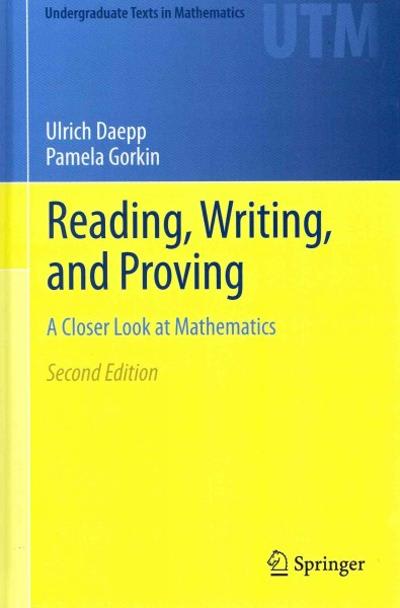



6-4 Identifying Significance People generally believe that the mean body temperature is 98.6 F. Appendix B from the textbook includes data set 3 - Body Temperatures of Healthy Adults, which includes a sample of 106 body temperatures with these properties: The distribution is approximately normal, the sample mean is 98.20 F, and the standard deviation is 0.62 F. We want to determine whether these sample results differ from 98.60F by a significant amount. One way to make that determination is to study the behavior of samples drawn from a population with a mean of 98.6. a. Use Statdisk to generate 106 values from a normally distributed population with a mean of 98.6 and a standard deviation of 0.62. Use Statdisk to find the mean of the generated sample. Record that mean here: b. Repeat part (a) nine more times and record the 10 sample means here: C. By examining the 10 sample means in part (b), we can get a sense for how much sample means vary for a normally distributed population with a mean of 98.6 and a standard deviation of 0.62. After examining those 10 sample means, what do you conclude about the likelihood of getting a sample mean of 98.20? Is 98.20 a sample mean that could easily occur by chance, or is it significantly different from the likely sample means that we expect from a population with a mean of 98.6? d. Given that researchers did obtain a sample of 106 temperatures with a mean of 98.20 F, what do their results suggest about the common belief that the population mean is 98.6 F?6-5. Identifying Significance This experiment involves the Statdisk data set 19 - Cola Weights and Volumes, which can be opened by clicking on Data Sets on the top menu bar and then selecting Elementary Statistics 12th Edition. a. Open the Cola data set and find the mean and standard deviation of the sample consisting of the volumes of cola in cans of regular Coke. Enter the results here. Sample mean: Standard deviation: b. Generate 10 different samples, where each sample has 36 values randomly selected from a normally distributed population with a mean of 12 oz and a standard deviation of 0.115 oz (based on the claimed volume printed on the cans and the data in the Cola data set). For each sample, record the sample mean and enter it here. C. By examining the 10 sample means in part b, we can get a sense for how much sample means vary for a normally distributed population with a mean of 12 and a standard deviation of 0.115. After examining those 10 sample means, what do you conclude about the likelihood of getting a sample mean like the one found for the sample volumes in the Cola data set? Is the mean for the sample a value that could easily occur by chance, or is it significantly different from the likely sample means that we expect from a population with a mean of 12? d. Consider the sample mean found from the volumes of regular Coke listed in the Cola data set. Does it suggest that the population mean of 12 oz (as printed on the label) is not correct?6-1 Finding Probabilities for a Normal Distribution Use Statdisk's Normal Distribution module to find the indicated probabilities. First select Analysis from the top menu bar, then select Probability Distributions, then Normal Distribution. a. Given a population with a normal distribution, a mean of 0, and a standard deviation of 1, find the probability of a value less than 0.75. b. Given a population with a normal distribution, a mean of 100, and a standard deviation of 15, find the probability of a value less than 83. c. Given a population with a normal distribution, a mean of 120, and a standard deviation of 10, find the probability of a value greater than 135. d. Given a population with a normal distribution, a mean of 98.6, and a standard deviation of 0.62, find the probability of a value between 97.0 and 99.0. e. Given a population with a normal distribution, a mean of 150, and a standard deviation of 12, find the probability of a value between 147 and 1606-3 Central Limit Theorem In this experiment, assume that all dice have 6 sides. a. Use Statdisk to simulate the rolling of a single die 800 times. (Select Data, then Dice Generator.) Use Copy/Paste to copy the results to the Descriptive Statistics and Histogram modules, and enter the actual results below. One Die: Mean: Standard Deviation: Distribution shape: b. Part (a) used a single die, but we will now use a pair of dice. Use Statdisk to "roll" two dice 800 times (again using Data/Dice Generator). The 800 values are totals for each pair of dice, so transform the totals to means by dividing each total by 2. (Use Copy/Paste to copy the results to the Sample Editor window, then use Statdisk's Sample Transformations feature to divide each value by 2. To divide each value by 2, select the operation of / and use a constant of 2.) Now use Copy/Paste to copy the 800 means to the Sample Editor window, then use the Descriptive Statistics and Histogram modules. Enter the results below. Two Dice: Mean: Standard Deviation: Distribution shape: c. Repeat part (b) using 10 dice. When finding the mean of the 10 dice, divide each value by 10. 10 Dice: Mean: Standard Deviation: Distribution shape: d. Repeat part (b) using 20 dice. 20 Dice: Mean: Standard Deviation: Distribution shape














